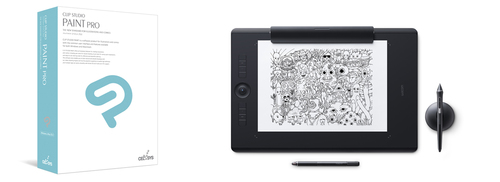RETAS (Revolutionary Engineering Total Animation System) is a 2D animation software bundle developed and sold by Celsys that is available for Microsoft Windows and Mac OS X. It handles the entire animation. RETAS is a type of 2D animation software. It was developed and sold by Celsys, and is available for both Mac OS X and Microsoft Windows. It is used by anime artists in Japan, and handles a lot of animation productions from tracing, digital drawing, and exporting using Adobe Flash and QuickTime. PaintMan is a digital painting tool that promises a quality finish and good efficiency.
Isamu asked:
What programs do anime studios use nowadays for animating anime? I know Photoshop and after effects have something to do with it, but are there others like ToonBoom or SAI involved? Anime like Fate/Zero and Kill la Kill are so wonderfully animated, I'm curious. Even Pokémon has improved in animation.
Now, this is far from an exhaustive list, but most anime companies vary surprisingly little when it comes to their choices of production software. It typically goes as follows:
For most of the grunt work of animation, nearly the entire industry relies on the RETAS Studio Suite. This is a suite of applications by Japanese company CELSYS that is similar, but not quite the same as Toon Boom Animation Studio, which is used often in the US. RETAS! PRO has four components. The first is Stylos HD, which uses a Wacom tablet to quickly draw vector line art and then compile each frame into a pre-set sequence. Since the software works well over a network, this allows different teams in different countries to work on key frames and in-betweens, and for animation directors and checkers to send notes back for tweaking. In-betweens can also be made very quickly by averaging frames and then tweaking the lines. The program also takes care of most of the organizational work of figuring out what cuts are at what state of production automatically. For animators who prefer to work on paper, there's also an app called TraceMan HD, which optimizes the chore of scanning in and vectorizing paper line art.
Once the line art is done, it's time for coloring, and for that there's PaintMan HD. Paintman is mostly a very streamlined Bucket-tool app, and has many of the features of Photoshop as well -- such as gradients and alpha-channels -- though for more specialized special effects work, Adobe Photoshop is used here too. Finally, the finished sequences are dumped into a compositing app to combine the cel sequences with the backgrounds, and choreograph each with the intended camera motion. The app in RETAS! PRO is called CoreRETAS, and it's come a long way in recent years, with easy ways to do common anime things like panning cels and moving the camera along a large background layer. However, more advanced techniques require plug-ins, and/or the old-standby 800 pound gorilla of the motion graphics world, Adobe After Effects. Many of the plug-ins are proprietary and developed directly for the industry. If there's 3D work, most of that is done in 3-D Studio Max or occasionally Maya, again, with proprietary plug-ins, which also gets added to the composition.
Once finished sequences are exported from the compositing program, visuals are assembled in a non-linear editor such as Premiere Pro or Adobe Media Composer. (Some studios may still be using Final Cut Pro 7, though I doubt any are using Final Cut Pro X -- the magnetic timeline simply doesn't work well with anime workflows.) The pencil tests are initially used to time out each cut and to work on audio, and then those shots are gradually replaced with the final composited versions once they're finished. If a final tweak needs to be made, modern workflows can usually accommodate changes to even individual cels without throwing everything off.
Things move fast in the software world, but the many developments that have taken place have mostly stayed within their established products. Artists tend to 'live' in the software they use every day, so any major platform changes are met with major resistance. You learn one app, and as long as you keep up with new features, you're probably OK for at least 5-10 years. Things have been streamlined a lot, and the fact that anime can be made so much faster than before has doubtlessly helped contribute to just how much of it gets made these days.
Retas Pro Animation Studio
Thank you for reading Answerman!
We are no longer taking question submissions. However, over the years we've answered THOUSANDS of your questions, and probably already answered yours! Check our our complete archives! Below are a few of the most popular ones...
- Will _____ get a new season? When?? (New productions are a closely guarded secret until they're announced. I don't know anything Google can't tell you.)
- Is ____ a trend? When did that start? (Who knows -- you often can't tell these things until years afterwards.)
- How do I get in touch with __(famous anime person)__? (We can't help you.)
Anime News Network founder Justin Sevakis wrote Answerman between July 2013 and August 2019, and had over 20 years of experience in the anime business at the time. These days, he's the owner of the video production company MediaOCD, where he produces many anime Blu-rays. You can follow him on Twitter at @worldofcrap.
 discuss this in the forum (12 posts) |
discuss this in the forum (12 posts) |
Retas Pro Hd
Answerman homepage / archives
